By Robert D. Webster
Special to NKyTribune
Just after 9:00 p.m. on a frigid February 13, 2016, a massive fire struck the historic Rabbit Hash General Store in rural Boone County, causing near-total destruction. Five fire departments fought the blaze well past midnight, struggling not only against the raging inferno but also against the thick ice caused by the 9-degree temperature acting on the hundreds of gallons of water being pumped from the hose lines. Even before the flames were fully extinguished, however, local residents vowed that the unique landmark and community gathering place would be completely rebuilt within a year.
Early History
The tiny town of Rabbit Hash can trace its history to about 1813, when a ferry was established just upriver at the mouth of Middle Creek. The ferry carried passengers, livestock, and farm supplies back and forth to what soon became Rising Sun, Indiana. As the population on the Kentucky side grew, local farmers found a need to build a storage building to safely house items near the ferry while they waited for the next steamboat to arrive. In 1831, a warehouse, of sorts, was built for such a purpose, first managed by 17-year-old James A. Wilson, who would eventually own the place.
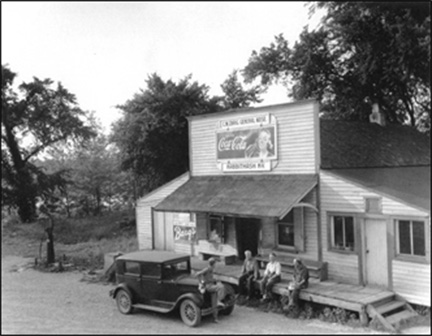
Ownership of the general store remained in the Wilson family until 1919. Sometime before 1894, Wilson took Cal Riddell on as a partner, however, and the two men’s names appeared above the door for years. Wilson died in 1904, and his son, Ben, who had already been running the business, inherited the property. Riddell was kept on as co-proprietor. In 1919, C.W. Craig purchased the store and operated it for several decades. His son, Ben Craig, owned the place after that.
Fame
Fame and intrigue have always encompassed the tiny town of Rabbit Hash. During the Korean War, Bob Hope mentioned the town by name often during his USO shows for the troops. Charles Kuralt featured Rabbit Hash in his popular television program, and Bill Geist even devoted one of his Sunday Morning news segments to the town – specifically about the unusual mayoral race in little Rabbit Hash, Kentucky. Most Northern Kentuckians are well aware that elected mayors of Rabbit Hash have actually been canines – yep, dogs! In more recent years, a PBS film titled The Adventures of Huckleberry Finn utilized the town as a backdrop in many of its scenes, and a full-length documentary about the town has also been produced.
For decades, Rabbit Hash has hosted numerous outings by health-conscious, bike-riding enthusiasts, as well as by more rugged-looking and tattoo-clad motorcycle gangs. Naturists enjoying the sites along the Ohio River and at nearby Big Bone Lick State Park have also made the village a popular stop. Families on Sunday drives have often made Rabbit Hash one of their destinations, and the general store has been the perfect spot for refreshments and picnic supplies for thousands.
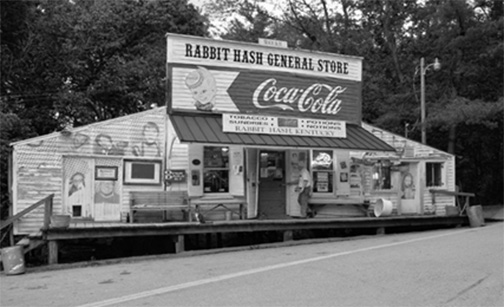
By the 1970s, the town of Rabbit Hash was, as Don Clare puts it, “circling the drain.” Clare is president of the Rabbit Hash Historical Society and was instrumental in the store’s recent rebirth. “Many of the commercial structures were falling into a state of disrepair due to neglect.” In 1978, Lib and Cliff Stephens, the son-in-law of C.W. Craig, owned the store and, after another disastrous Ohio River event – this time ice – they decided they’d had enough. Louie Scott purchased the place and made a few renovations, but never closed the place in order to keep its reputation of continuous operation. Suddenly there was life in the town once again.
Incredibly, Louie Scott didn’t stop there. He began purchasing other nearby properties until he owned every single building in town! In December 2002, Scott sold all the property to the Rabbit Hash Historical Society in order to ensure the community’s continued preservation. A generous donation of $250,000 bequeathed in 2001 by Edna Flower, a local resident, made this transaction and a subsequent endowment possible. The store was added to the National Register of Historic Places in 1989. In 2003, the Rabbit Hash Historic District was added to the Register, encompassing the entire town proper, plus 33 acres of contiguous land.
Disaster Strikes
First thoughts were that the raging inferno that destroyed the historic landmark on February 13, 2016 may have been started by the wood stove. In the final analysis, however, the fire’s cause was ruled to be faulty wiring in a rustic Coca-Cola cooler which had served ice-cold refreshments for generations. The flames burned quickly through the wooden store as firefighters coped with a number of obstacles. If the cold temperatures and rapidly-forming ice was not bad enough, the rural area had no hydrants. Firefighters had to bring in water by truck.
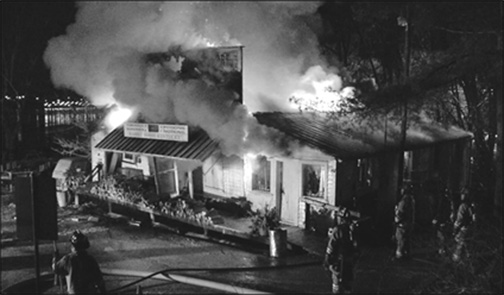
Belleview-McVille Fire Chief, Jeff Hermes, quickly determined it was too dangerous to be on the inside of the burning structure, so firefighters were forced to take a defensive position outside the store. Flames were already through the roof when the first responders arrived. It took about five hours to knock down the fire.
Local residents learned quickly of the unfolding tragedy, of course. A large group endured the cold to gather nearby and remained for hours. Many sang Amazing Grace as if they were watching their entire world come to an end. At about 11:15 p.m., firefighters pulled down the picturesque front façade while many spectators cried.
Don Clare spent the whole night at the scene. After firefighters left, several hot spots flared up so he and a handful of others commandeered every fire extinguisher in town and watched over the place, putting small fires out as fast as they started. The following day, volunteers worked to salvage whatever they could, from furniture and antiques to a variety of musical instruments used in the many concerts held there. Much of the front façade was also salvaged from the middle of the roadway and placed in a barn.
The Historical Society soon realized that being on the National Register was both a blessing and a curse. Keeping its historic designation would require clearing a lot of hurdles and playing by the Registry’s many rules. Strict guidelines were set regarding preserving, rehabilitating, restoring, and reconstruction. First of all, at least 75 percent of the original structure had to be remaining after the fire. Luckily, the foundation, floor, and three walls were mostly intact. The toughest hurdle: only “period” materials could be used in the rebuilding, and they had to be prepared in a similar manner to the construction techniques of 1831.
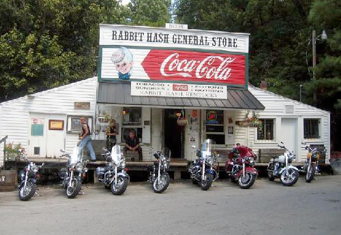
Incredibly, a total of five structures, all built in the mid-1800s and donated to the cause, were carefully dismantled over the following six months or so and their materials used in the authentic reconstruction of the general store. Ed Unterreiner, local resident and owner of Rivertown Construction stated, “Taking every board down, de-nailing it, cleaning it and storing it, and finally bringing it to the site… that’s where a lot of time went.”
Shortly after the fire, two groups joined in the efforts of preparing and drawing up architectural plans. Mike Striker, a Boone County resident and senior manager of the archaeology division of the architectural firm of Gray and Pape, brought his expertise, along with a laser scanner to create a map of the store. These accurate measurements were handed off to Harry Sparks, retired owner of Architectural Group International and an old friend of the general store. The laser scan measured the crooked floor, the uneven settings of the doors and windows and all the quirks of the store as it was built and added onto over the course of its 185-year life.
In May 2016, the blueprints and plans were finalized and sent off to the Department of the Interior for approval. While the volunteers waited, fundraisers cropped up across Northern Kentucky and Ohio. The largest event was likely the Ride for Rabbit Hash, when hundreds of bikers who euphemistically called the small town home came together for one great ride through the city. The effort’s receipts were turned over to the cause. A fundraiser in Fort Thomas raised $11,000. Duke Energy, which runs a plant a few miles downstream, donated $25,000. Forcht Bank matched $1,000 in donations. Concerts were also held all over Boone County, and a two-night event at Newport’s Southgate House boasted more than 30 performers, with proceeds benefiting the store. Students at Kelly Elementary School, four short miles from the store, donated $1,200 and a handful of valuable antiques to fill the store they knew so well.
In early October, the plans were approved and the many volunteers were ready with hammers. By October 11th, the floor was in place and the framing was up. Amazingly, the floor was purposely rebuilt to be as crooked as the original. Election Day rolled around, and Brynneth Pawltro, an energetic pit bull, was elected mayor. By late January, new shelving and cubbyholes were being built inside. The freshly painted walls were whiter than they had ever been, but would soon be covered with antiques, stacks of T-shirts and mugs, and a rainbow’s work of candy jars like they’ve always been in the past.
The Grand Re-opening
On a chilly April 1st, 2017, the historic Rabbit Hash General Store reopened to a huge crowd of long-time supporters and first-time visitors. The reopening celebration, complete with ribbon cutting, began at 9:30 a.m. Live music filled the afternoon and evening. Among the many guest speakers were Don Clare, Ed Unterreiner, and store proprietor, Terrie Markesberry, as well as local icon, Asa Rouse. Representatives from Duke Energy, who donated the initial $25,000, were also on hand. Mayor Pawltro was present but didn’t speak during the festivities, with the exception of a few barks back and forth with several other dogs in attendance.
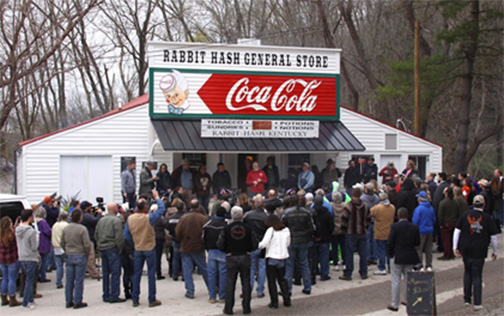
As in decades past, the store offers everything from cold refreshments and snacks to general merchandise such as flour, canned goods, and everyday necessities such as toothpaste and shampoo. More unique items include jawbreakers the size of cue balls, White Cloverine Salve to heal minor burns, and Epsom Salt Cleanser, manufactured by the Grandpa Soap Company since 1878. Candy cigarettes and wild cherry licorice twists will please the taste buds of many youngsters. The walk-in beer cooler, as well as a wonderful display of regionally-created artwork, will satisfy the shopping urges of many adults. Generally speaking, however, if they don’t have it, you probably don’t need it.
It Takes a Village
“It takes a village,” as they say, and the rebirth of the Rabbit Hash General Store proves that. Of the half-dozen people who spoke during the ribbon cutting ceremonies, no one took any personal credit for the incredible accomplishment. Rather, each gave thanks to their counterparts, to the Rabbit Hash community in general, to the local businesses that donated supplies, and to the dozens of generous individuals who donated not only their money but their time.
The reconstructed store is an exact replica and, because of the painstaking attention to detail, the building will remain on the National Register of Historic Places. Don Clare says “…people within a 10 or 15- mile radius claim to live in Rabbit Hash – a clear indication of the love and affection people have for the town.” His directions to the town are quite simple: “Go down the expressway, turn right on KY 586, and go back 200 years.” He continues, “In the 1800s and 1900s, the Rabbit Hash General Store was the social meeting place of the area. It was where kids came – families came. You could share recipes, share stories. Anyone who visits now will get some degree of pleasure, peace, and serenity, even if it is just for a minute or two.”
Robert “Bob” Webster is president of the Kenton County Historical Society and author of several books on Northern Kentucky history, including the Beverly Hills Supper Club: the Untold Story Behind Kentucky’s Worst Tragedy. He is a frequent contributor to Northern Kentucky Heritage magazine and is an agent with Kentucky Farm Bureau Insurance in Independence.














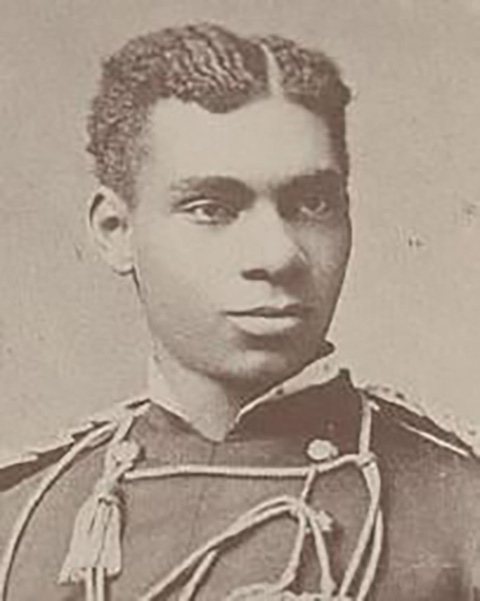



I would like to correct this statement;
In 1919, C.W. Craig purchased the store and operated it for several decades. His son, Ben Craig, owned the place after that.
After C.W. Craig’s death in 1945, his wife Emma and children W.J. (Sheeney), Lib and Hazel (Chub) continued to own the business. Then it was taken over by Lib and her husband Cliff who owned it until poor health on Cliff’s part contributed to their choice to sell the business to Louie Scott.